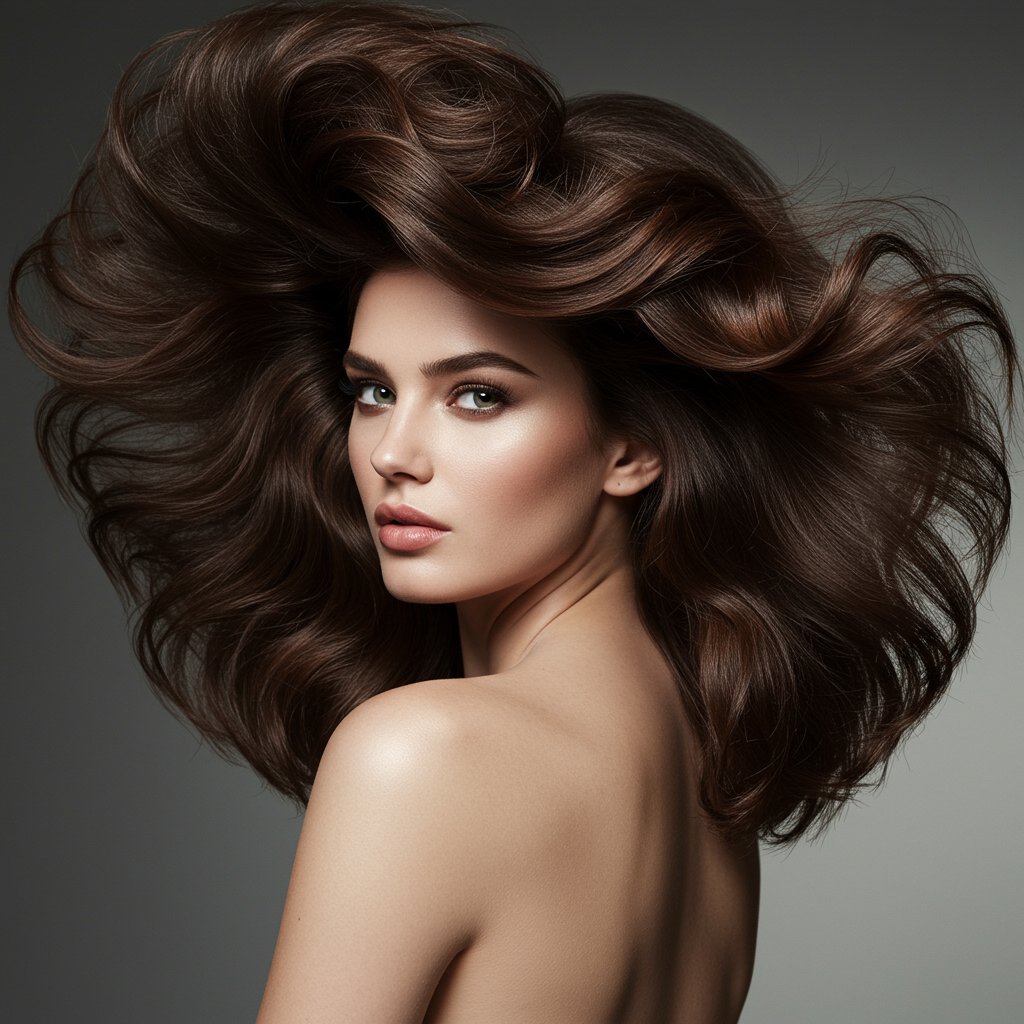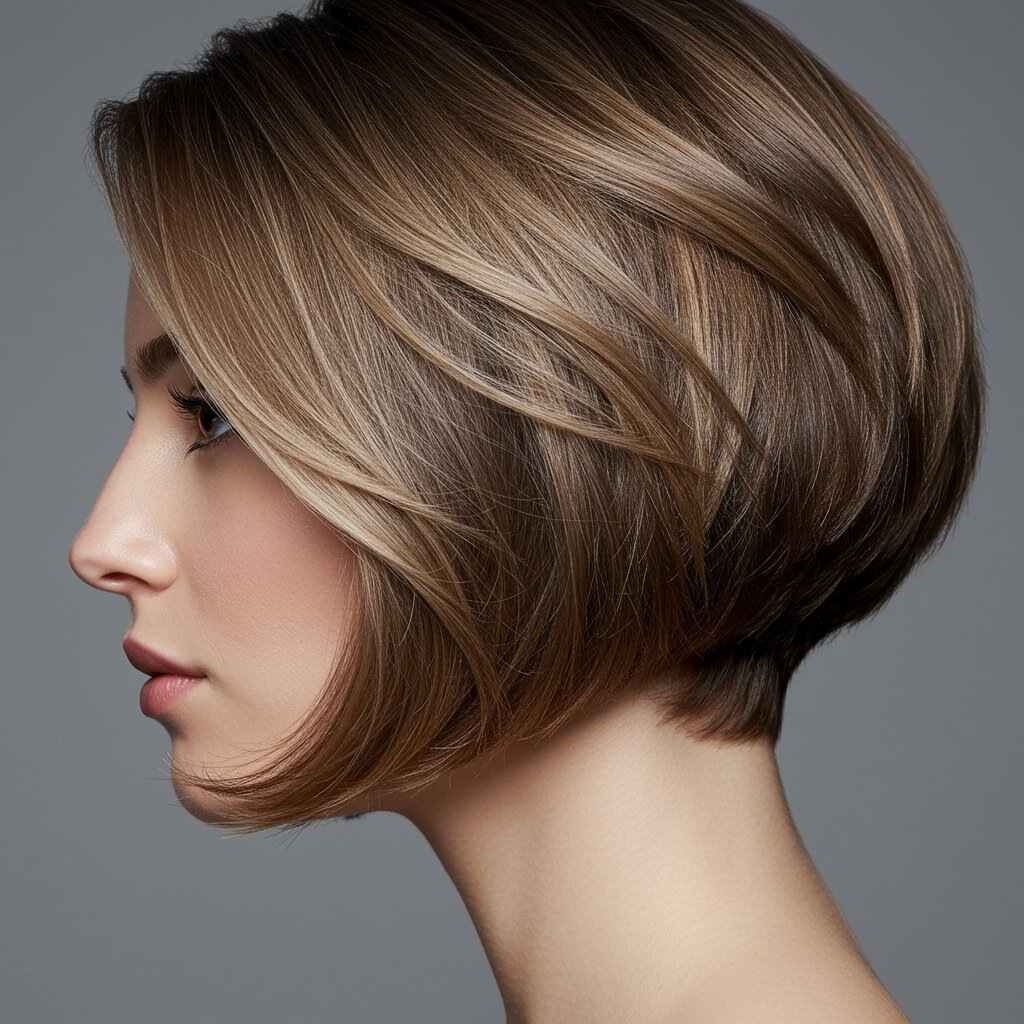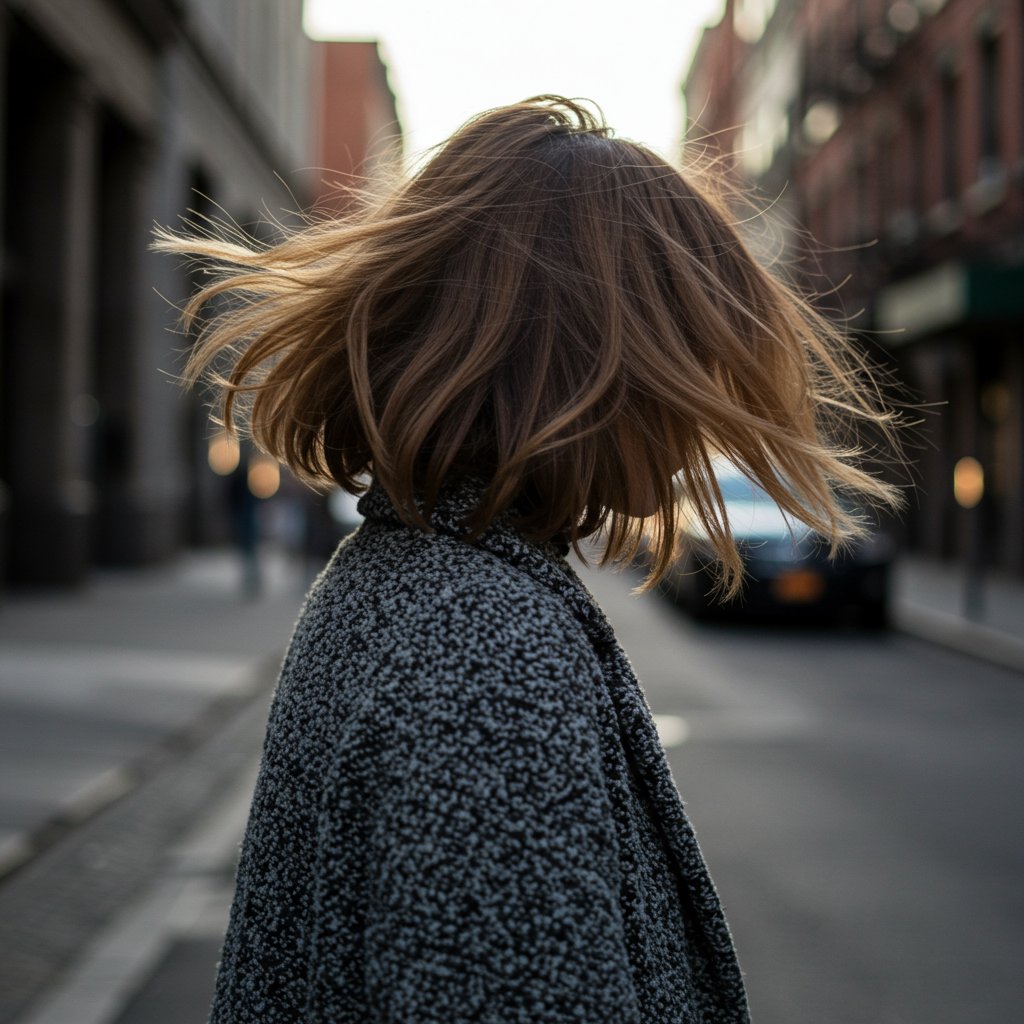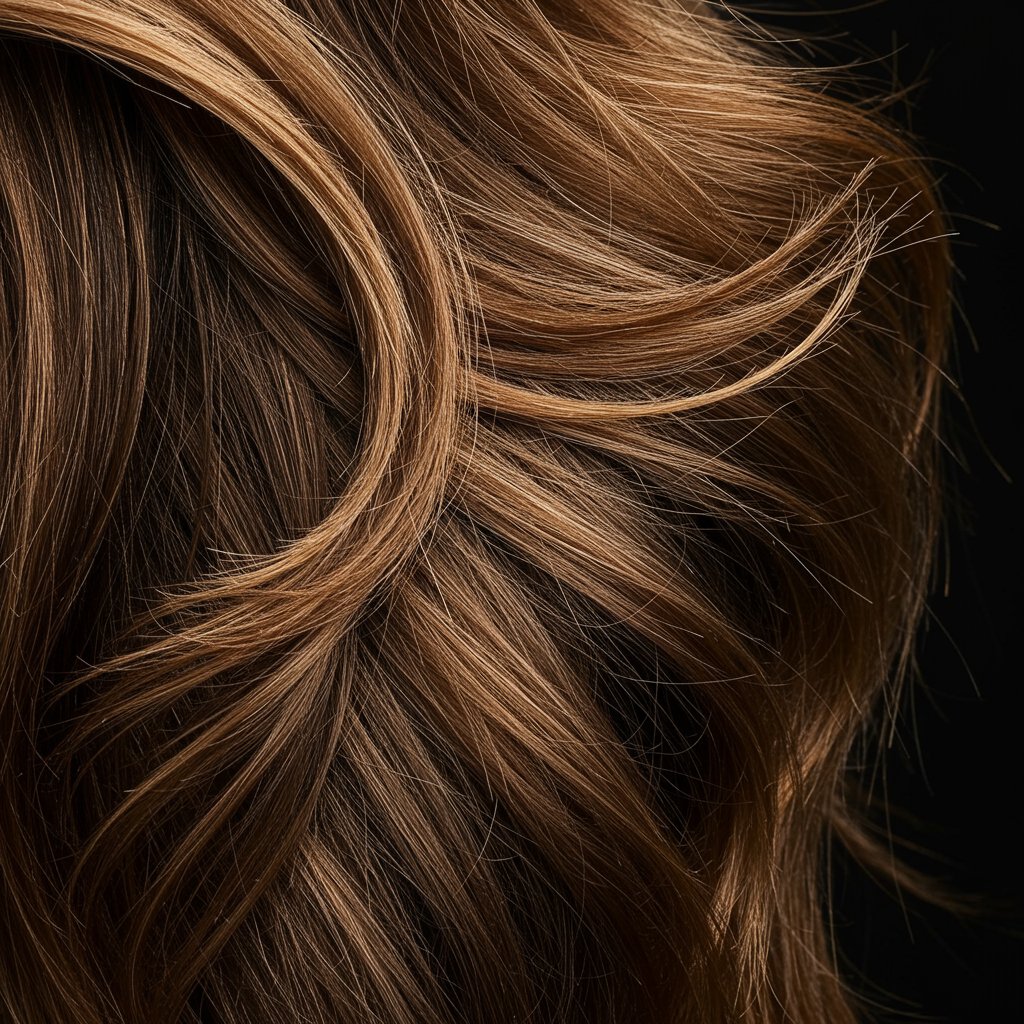The Ultimate Guide to the Butterfly Haircut | Get Perfect Layers in 2025
The Viral Sensation: An Introduction to the Butterfly Haircut
The hair world is constantly evolving, but few trends have captured the collective imagination quite like the butterfly haircut. This beautifully layered style has soared in popularity, flooding social media feeds and gracing red carpets with its signature volume and movement. It's a masterful blend of retro nostalgia and modern sophistication, channeling the feathered, face-framing looks of the '70s and '90s while feeling entirely fresh and contemporary. The allure of this cut lies in its clever construction—it creates the illusion of shorter hair around the face without sacrificing overall length, offering a transformative look without a drastic commitment.

This guide is designed to be your definitive resource for understanding, achieving, and mastering the butterfly haircut. We will delve into its unique structure, explore which face shapes and hair types it flatters most, and provide expert advice on how to communicate your vision to a stylist. Furthermore, we'll break down the professional techniques behind the cut, offer step-by-step styling tutorials for recreating that salon-fresh bounce at home, and share tips for long-term maintenance. Whether you're considering taking the plunge or simply want to perfect your existing style, this comprehensive overview will equip you with all the knowledge needed to embrace one of the most versatile and stunning haircuts of the decade.
What Exactly Is the Butterfly Haircut?
At its core, the butterfly haircut is a highly strategic, multi-layered style. Its defining feature is the dramatic contrast between two distinct sections: short, airy layers on top and long, flowing layers underneath. The top layers, often cut to chin or shoulder length, create a cascade of volume and frame the face beautifully, mimicking the shape and movement of butterfly wings—hence the name. This shorter section can be styled to create the illusion of a bob or a lob from the front, offering a playful, face-framing effect. Meanwhile, the longer layers in the back preserve the overall length of the hair, providing a soft, flowing silhouette.

Distinguishing the Butterfly from Other Layered Cuts
While layered cuts are nothing new, the butterfly haircut has a specific anatomy that sets it apart. Unlike a traditional long-layered cut, where layers are subtly blended throughout, the butterfly cut features a more pronounced disconnection between the top and bottom sections. It's less choppy and rebellious than a shag or a wolf cut, which typically feature razored texture and heavy crown layers. The butterfly haircut is softer and more glamorous, focusing on creating rounded, bouncy volume rather than edgy texture. Think of it as the sophisticated cousin to the shag, offering the volume of a '90s supermodel blowout with the feathery softness of Farrah Fawcett's iconic '70s mane.
This deliberate layering technique is what makes the haircut so versatile. The shorter layers add lift and body to the crown, preventing hair from falling flat, while the longer lengths maintain a sense of elegance and femininity. The result is a dynamic style that looks incredible in motion, with each layer contributing to a full, healthy, and multi-dimensional appearance. It’s a haircut that provides both structure and freedom, making it a sought-after choice for those looking to add life to their locks.
Is the Butterfly Haircut Right for You? Assessing Face Shapes and Hair Types
One of the primary reasons for the butterfly haircut's widespread appeal is its remarkable adaptability. However, understanding how it interacts with different face shapes and hair textures is key to ensuring a flattering result. A skilled stylist can tailor the cut to enhance your specific features, but knowing what to expect is crucial for a successful salon visit.

Best Face Shapes for the Butterfly Cut
This haircut is particularly flattering for those with oval, square, and heart-shaped faces. On oval faces, the balanced proportions allow for almost any variation of the cut. For square or rectangular faces, the soft, face-framing layers work wonders to soften a strong jawline, adding curves and movement that create a more rounded illusion. On heart-shaped faces, the layers beginning around the chin can add volume where it's needed most, balancing a narrower jaw with a wider forehead. Those with round faces can also benefit from the butterfly haircut, provided the layers are kept longer to elongate the face rather than add width at the cheeks.
Ideal Hair Types and Textures
The butterfly haircut truly shines on hair that has some natural body and thickness. Thick hair is the perfect canvas, as the layers remove excess weight, preventing the dreaded pyramid shape and adding incredible movement. For those with wavy hair, this cut is a dream, as it enhances the natural texture and creates a beautiful, effortless bounce. Straight hair can also look stunning with a butterfly cut, but it will require more styling effort to achieve the signature volume and flicked-out ends. Those with fine hair should approach with caution; while the layers can create the illusion of more volume, removing too much hair can make the ends appear thin. In this case, a stylist might recommend a modified, less heavily layered version to maintain density.
The Consultation: How to Ask Your Stylist for the Perfect Butterfly Cut
A successful haircut begins with a clear and detailed consultation. Simply asking for a “butterfly haircut” might not be enough, as the style can be interpreted in various ways. To ensure you and your stylist are on the same page, it's essential to communicate your desires effectively using specific language and visual aids. A great consultation is a collaboration that sets the stage for a result you'll love.

Using Reference Photos and Key Terminology
Bringing inspiration photos is the single most effective way to convey your vision. Look for pictures of the butterfly haircut on people with a similar hair type and face shape to your own. When discussing the cut with your stylist, use descriptive keywords. Mention you want short, face-framing layers that start around your chin or collarbone. Specify that you're looking for lots of volume at the crown and a '90s blowout effect. You can also request curtain bangs or longer, sweeping bangs to complement the style. Emphasize that you want to maintain your overall length while adding significant movement and shape through the top layers. This clarity helps the stylist understand the exact balance of short and long elements you're envisioning.
Discussing Lifestyle and Maintenance
Be honest about your daily routine and how much time you're willing to dedicate to styling. The butterfly haircut looks its best when styled, so if you prefer a low-maintenance, wash-and-go approach, your stylist might suggest modifications. They can tailor the layering technique to work better with your natural texture or recommend products that will make styling quicker and easier. This conversation ensures that your new haircut not only looks fantastic when you leave the salon but also fits seamlessly into your everyday life.
The Anatomy of the Cut: A Professional's Perspective
Understanding the technical process behind the butterfly haircut can deepen your appreciation for the artistry involved. While this is not a DIY guide—this complex cut should always be left to an experienced professional—knowing the steps can help you better articulate what you want during your consultation. The magic of the butterfly cut lies in precise sectioning and expert blending.

The Sectioning Strategy
A stylist typically begins by sectioning the hair. The most common technique involves creating a horseshoe-shaped section at the top of the head, from the temples back to the crown. This top section is what will become the shorter, 'butterfly wing' layers. The rest of the hair below this section is left down to form the longer, foundational length. This clean separation is critical for creating the distinct yet harmonious dual-length effect that defines the cut.
Crafting the Layers
Once sectioned, the stylist will work on the top portion first, often cutting these layers to fall somewhere between the chin and shoulders, depending on the client's preference and face shape. These layers are usually cut with a vertical elevation to create soft, cascading movement. Next, the stylist addresses the longer bottom section, adding subtle, long layers that connect seamlessly with the shorter top layers. The final step is blending. The stylist will meticulously connect the two sections, ensuring there isn't a harsh, shelf-like line. This is often done through point cutting or slide cutting to create a soft, feathery texture that allows the layers to melt into one another beautifully.
Styling Your Butterfly Haircut at Home: Tools and Techniques
To truly make your butterfly haircut come alive, you'll need the right tools, products, and techniques. The goal is to maximize volume at the roots and create a soft, bouncy curl or flick at the ends. With a bit of practice, you can achieve a salon-quality blowout at home that showcases the beauty of your new layers.

Essential Tools and Products
Your styling arsenal should include a few key items. A powerful blow dryer with a concentrator nozzle is a must for directing airflow. A set of round brushes in various sizes will allow you to create volume and shape—use a larger one for overall body and a smaller one for face-framing pieces. Velcro rollers or a hot roller set are game-changers for achieving long-lasting volume at the crown. For products, start with a volumizing mousse or spray applied to damp roots. A quality heat protectant is non-negotiable. To finish, a light-hold hairspray will lock in the style without stiffness, and a texturizing spray can add a touch of modern, piecey definition.
Step-by-Step Styling Guide
- Prep: Start with towel-dried, damp hair. Apply your volumizing product to the roots and a heat protectant from mid-lengths to ends.
- Rough Dry: Using your blow dryer, rough-dry your hair until it's about 80% dry, focusing on lifting the roots with your fingers.
- Section and Style: Section your hair, mirroring the layers of the cut. Using a large round brush, blow-dry the bottom, longer layers, curling the ends under or slightly outwards.
- Build Volume: For the top, shorter layers, use a medium round brush. Over-direct each section—pulling it up and forward as you dry—to create maximum lift at the root. Roll the ends around the brush to create that signature bouncy, flicked-out shape.
- Set the Crown: For extra staying power, place a few large velcro rollers in the hair at the crown while it's still warm from the blow dryer. Let them cool completely before removing.
- Finish: Once all rollers are out, gently shake out your hair with your fingers. Mist with a light-hold hairspray to set the look.
Maintaining Your Butterfly Look: Longevity and Salon Visits
A great haircut deserves great care. To keep your butterfly haircut looking its best, a consistent maintenance routine is key. This involves regular trims to maintain the shape of the layers and a healthy hair care regimen to ensure your locks stay strong and vibrant.

Scheduling Your Trims
The layers are the star of this haircut, and they need to be kept sharp to maintain their shape and movement. It's generally recommended to book a trim every 8 to 12 weeks. This timeframe is ideal for snipping off any split ends and re-defining the layers before they grow out and lose their distinctive butterfly effect. Waiting too long between appointments can cause the shorter layers to blend too much with the longer ones, collapsing the voluminous silhouette.
At-Home Hair Care
Between salon visits, focus on hair health. Since styling this cut often involves heat, using deep conditioning treatments or hair masks weekly is a great way to replenish moisture and keep your hair resilient. Minimize heat damage by always using a heat protectant and giving your hair a break from hot tools when possible. As the cut grows out, it does so gracefully, with the layers softening over time. You can embrace this softer look or use styling techniques, like curling the ends, to enhance the shape as you approach your next salon appointment.
Pro Tips for Elevating Your Butterfly Look
- Master the C-Shape Blowout: When using your round brush on the face-framing layers, think of creating a 'C' shape. Roll the brush towards your face to create a soft, sweeping curtain effect.
- Velcro Rollers Are Your Best Friend: For an extra boost of '90s supermodel volume, don't skip the rollers. Setting the top section while you do your makeup can lock in lift for the entire day.
- Second-Day Refresh: Revive your style on day two with a spritz of dry shampoo at the roots for lift and a quick pass of a large-barrel curling iron on the ends to redefine the flick.
- Embrace Air-Drying: On days you want a more low-key, bohemian vibe, apply a wave cream or sea salt spray and let your hair air-dry. The layers will enhance your natural texture for a beautifully undone look.
- Play with a Center Part: The butterfly haircut is designed to be symmetrical, making it a perfect match for a classic center part that allows the face-framing layers to fall evenly on both sides.

Frequently Asked Questions About the Butterfly Haircut
Can I get a butterfly haircut with medium-length hair?
Absolutely. While it's often seen on long hair, the butterfly haircut can be beautifully adapted for medium-length hair, such as a lob or shoulder-length style. The key is creating a visible distinction between the shorter top layers and the baseline length. The effect will be a bit subtler but will still provide fantastic volume and movement.How is the butterfly cut different from 'The Rachel'?
'The Rachel' from the '90s was characterized by much choppier, more defined layers that flicked out distinctly. The modern butterfly haircut is a softer, more blended evolution of that concept. It focuses on a more seamless transition between layers and a bouncier, more rounded volume rather than sharp, flicked ends.Does the butterfly haircut work on curly hair?
Yes, it can be stunning on curly hair when done correctly by a stylist experienced with curls. A dry-cutting technique is often preferred to allow the stylist to see how each curl will sit. The layers can remove bulk, enhance the curl pattern, and create a beautiful, rounded shape with incredible volume.Is the butterfly haircut high-maintenance?
It can be considered medium- to high-maintenance in terms of styling. To achieve the signature voluminous, blown-out look, it requires effort with a blow dryer, round brushes, or rollers. However, it can also be air-dried for a more casual, wavy look. The maintenance in terms of salon visits is fairly standard, requiring trims every 2-3 months.What are the best products to use for styling a butterfly haircut?
Volumizing products are essential. A good volumizing mousse or root-lifting spray is your starting point. A quality heat protectant is a must. For finishing, a light-hold hairspray will provide memory and hold without weighing the hair down, and a touch of shine serum on the ends can add a polished, healthy look.Conclusion: Embrace the Transformation
The butterfly haircut is more than just a passing trend; it's a testament to the power of a well-executed, versatile style. Its unique ability to offer the best of both worlds—face-framing shape and luxurious length—makes it a compelling choice for anyone looking to refresh their look without a dramatic chop. It delivers on its promise of volume, movement, and effortless glamour, proving that a strategic cut can completely transform your hair.
By understanding its structure, assessing its suitability for your hair, and learning the right styling techniques, you can fully embrace this beautiful haircut. The key to perfection lies in a collaborative consultation with a skilled professional who can tailor the layers to your unique features. If you're ready for a change that is both bold and beautiful, the butterfly haircut might just be the perfect way to let your style take flight.


